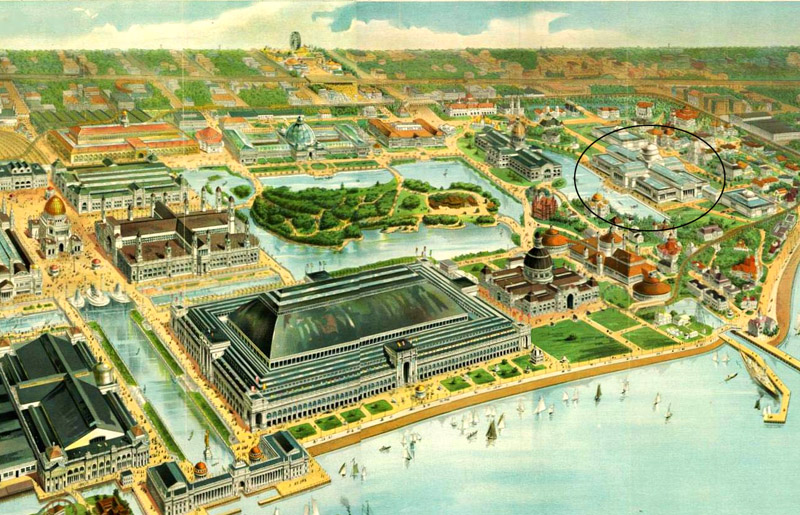 | |||
 | |||

|
The BUTTERFIELD BLUES BAND - EAST-WEST - Album Cover Location - Chicago The (Paul) Butterfield Blues Band was one of the first American bands of the sixties to focus exclusively on playing urban electric blues, the kind played by Chicago bluesmen like Muddy Waters, Howlin' Wolf, and Little Walter, who they had watched play in Chicago clubs during their high school years. In fact, at the 1965 Newport Folk Festival, after playing their own electrified blues set in the afternoon, three of the band members (Bloomfield, Arnold, and Lay) played with Bob Dylan that evening when he shocked the audience by mixing traditional folk music with electric blues. (the folk purists jeered; those who had heard "Like A Rolling Stone" released 4 days earlier wanted more; mixed-up confusion ensued). Though well-known among blues aficionados, the band first reached the general mass audience with their appearance in the movie Woodstock where they played "Love March." Founding members Paul Butterfield (vocals, harp), Elvin Bishop (guitar) and Michael Bloomfield (lead guitar) all hailed from Chicago. Paul Butterfield even sang about his hometown in his song, Born in Chicago. Sam Lay (drums) and Jerome Arnold (bass) joined the band after playing in Howlin' Wolf's touring band East-West, pictured below, was the band's second album and was released in 1966 on Elektra Records. 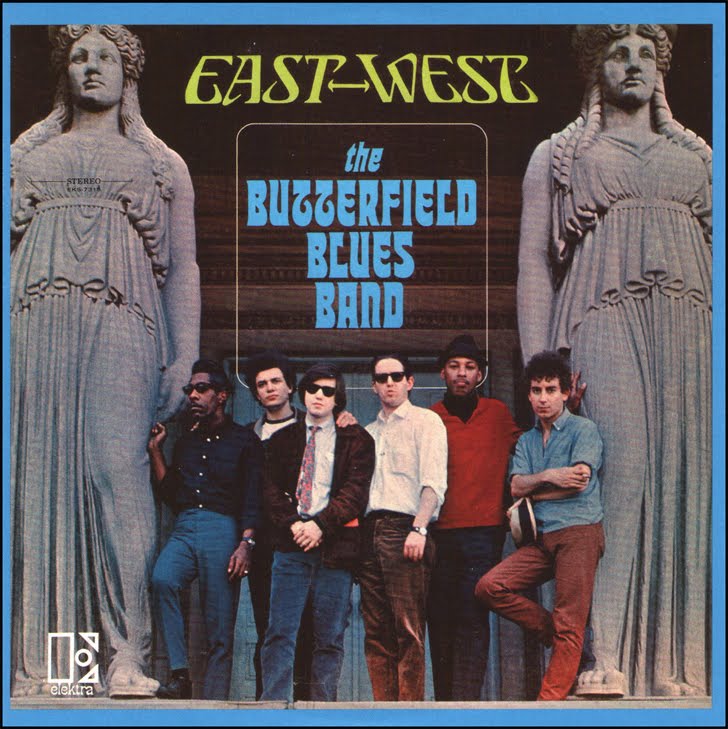
The title references the fact that in addition to the "western" jazz/rock/blues fusion on the album, there is also a touch of "eastern" Indian raga blended into the music. The band members, above, left to right: Billy Davenport (drums), Mike Bloomfield (guitar), Mark Naftalin (piano, organ), Paul Butterfield (vocals, harmonica), Jerome Arnold (bass), Elvin Bishop (guitar) (Note: Billy Davenport had replaced Sam Lay on drums by the second album.) This is where the album cover was shot, amid the caryatids (female sculptures), alongside the Museum of Science and Industry in Chicago, the hometown of the band. 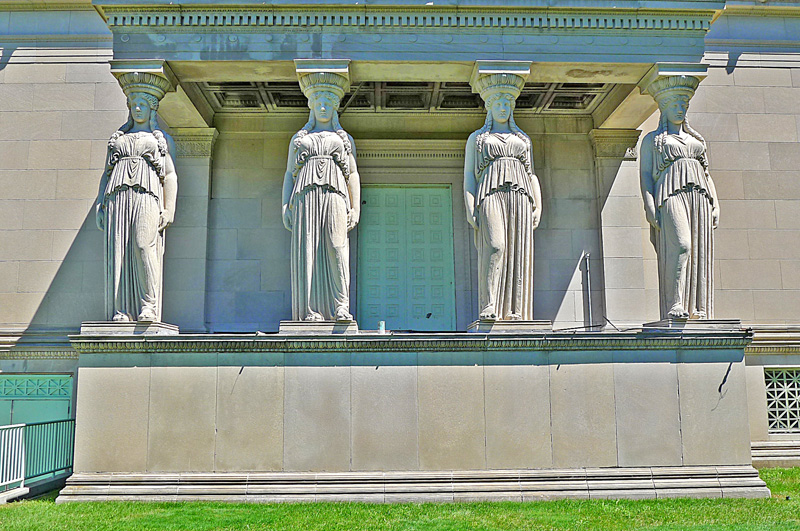
(photo by Larry Hearn) Here's the album PopSpotted. A special thanks goes out to Larry Hearn of Chicago for taking the photos of the museum 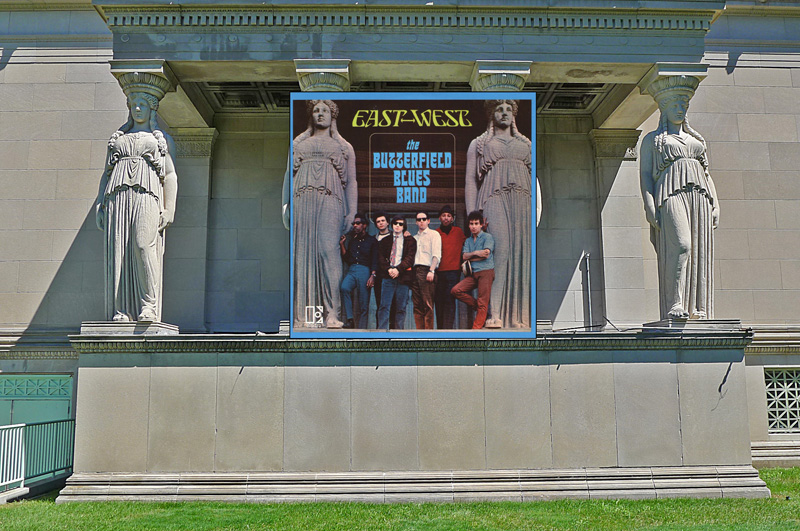
(background photo by Larry Hearn) In fact, Larry was the catalyst for the whole PopSpot. One day I got an email and it said, "Hey, what about Chicago? You have no PopSpots about Chicago? Can I help you do a Chicago PopSpot?" So I took him up on it. When I grew up, my friend Crazy Rick had East-West, and he used it to learn how to play the blues when he wasn't explaining math to me. So I suggested to Larry, "Let's do Paul Butterfield." I did the preliminary research; then Larry drove out to to take the photographs. That was actually over year ago, but I'm a one-man operation and these take time. So, thank you Larry for your patience and your perfect photographs. Here's the result." (By the way, Larry has his own website where he blends photos of old and new Chicago. See it at daysoffuturepassed.com) Here's a publicity release from the same session. 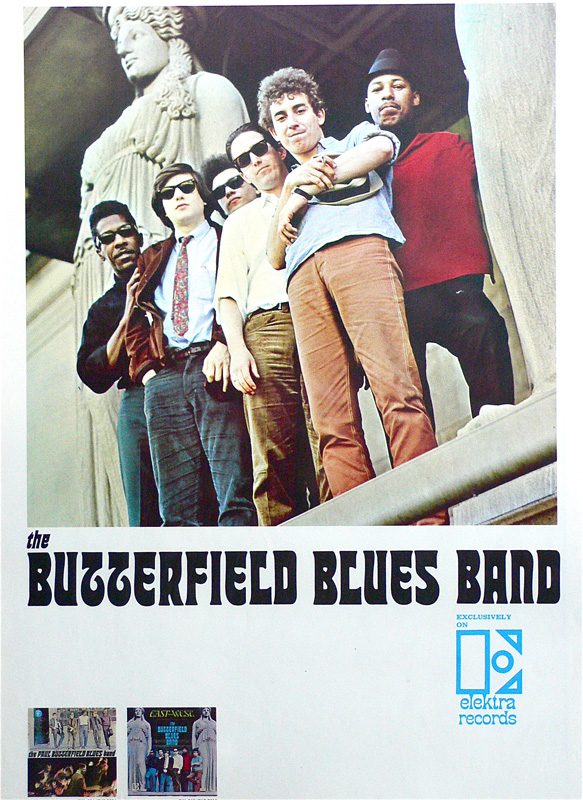
And here it is PopSpotted by way of one of Larry's photos. 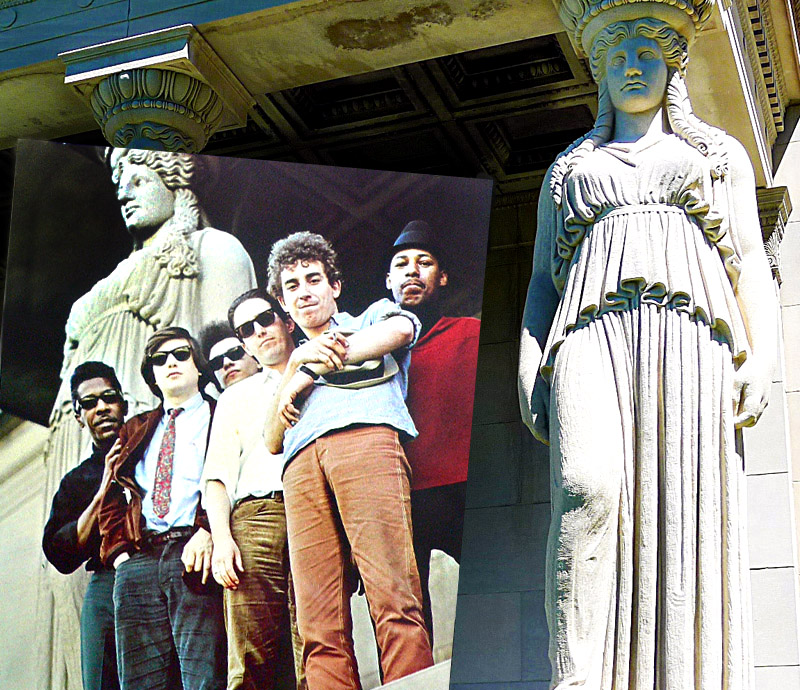
(background photo by Larry Hearn) Here's what some of the original "caryatids" looks like from a building in ancient Greece. The sculpture set is known as the "Porch of Maidens." Wikipedia say a "caryatid" is a "sculpted female figure serving as an architectural support instead of a column." (I think it translates as, "Quick, call us a chiropractor!") 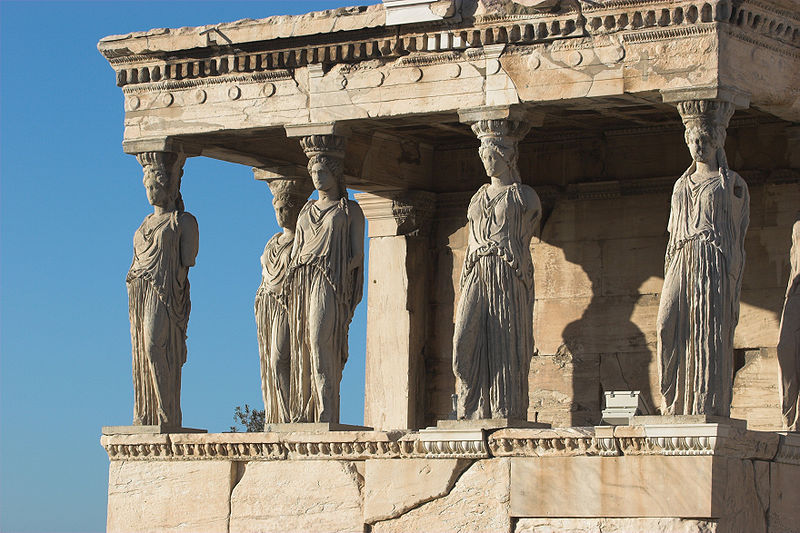
(Photo: Wikipedia Commons/Thermos) This is where the cover shot was taken. The back cover photo was shot nearby. More on that in a minute. 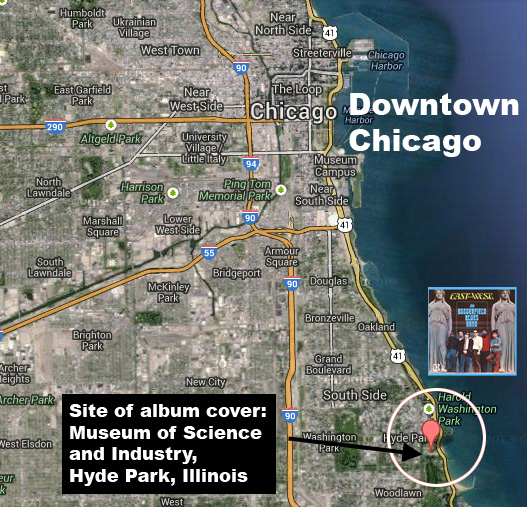
How I searched for the location I started by searching on Google for "Female sculptures that look like columns" which resulted in the name "caryatid." Then, figuring the band would have been photographed in Chicago, I Googled "caryatid Chicago" and found this picture - which was exactly what I was looking for. 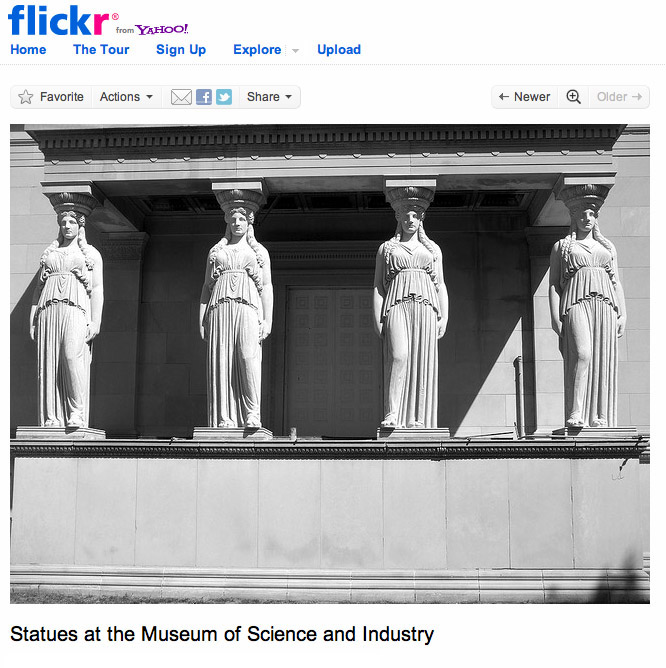
The photo indicated that it was taken at the Museum of Science and Industry which I knew (from old architecture classes) was one of the buildings built for the famous Columbian Exhibition (i.e. World's Fair) from around the turn of the century (actually 1893). Here's a photo from that. (They certainly don't make World's Fairs like they used to! ) 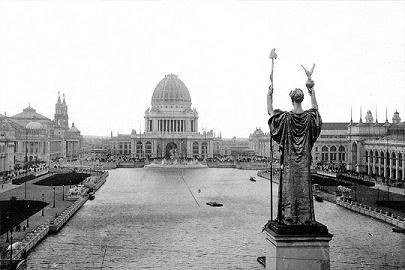
And here's the Museum Building (below) - still remaining 121 years after the World's Fair. I've circled where I spotted the location of the first two sets of caryatids that I found. 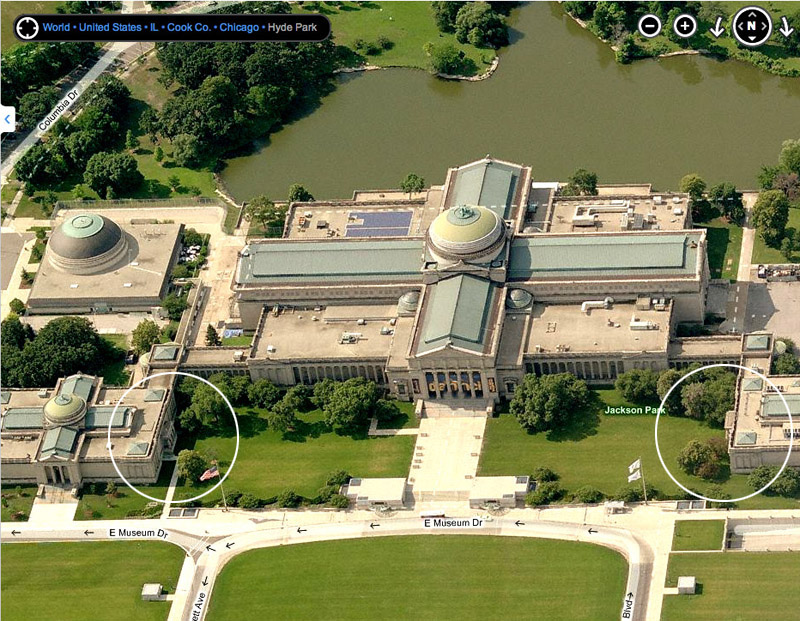
The museum is pretty impressive. Here's what Wikipedia says: "The Museum of Science and Industry...located in the Hyde Park section Chicago...is housed in the former Palace of Fine Arts from the 1893 World's Columbian Exposition. ... And now, with fans of The Butterfield Blues Band streaming to it, it might become the #1 largest cultural attraction in Chicago. You never know. Before we go further, as background, here's the museum from above. 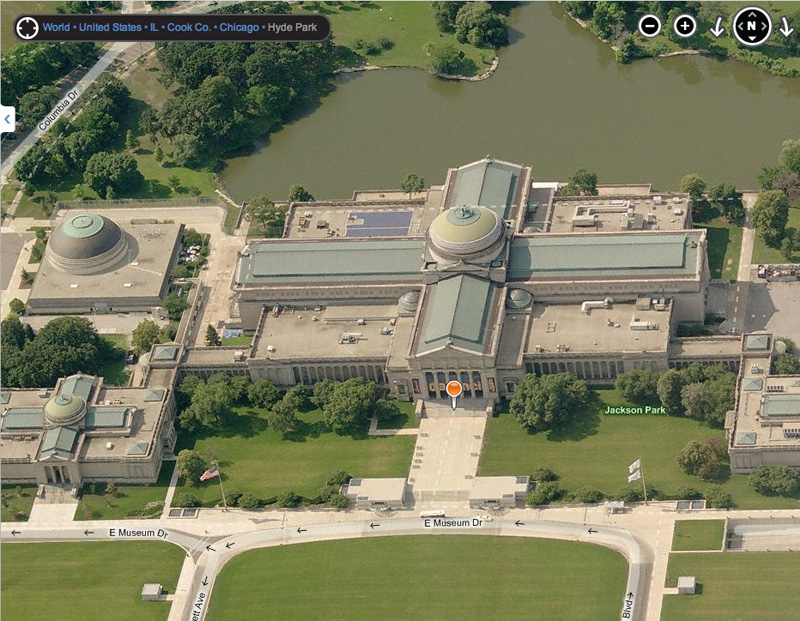
And here's where it was in relation to the whole 1893 Columbian Exposition. That must have been huge!
To find out which caryatids the band was photographed on, I called up the Museum and asked them which set of caryatids the public was allowed on. They said: "None. There is no door leading out to the sculptures that anyone is allowed to use." That meant the band had to hoist themselves up on the ledge in order to take the photo. Since the different sets looked alike, I asked Larry to take a photo of these, the ones to the left of the front entrance, which I used in the PopSpots. 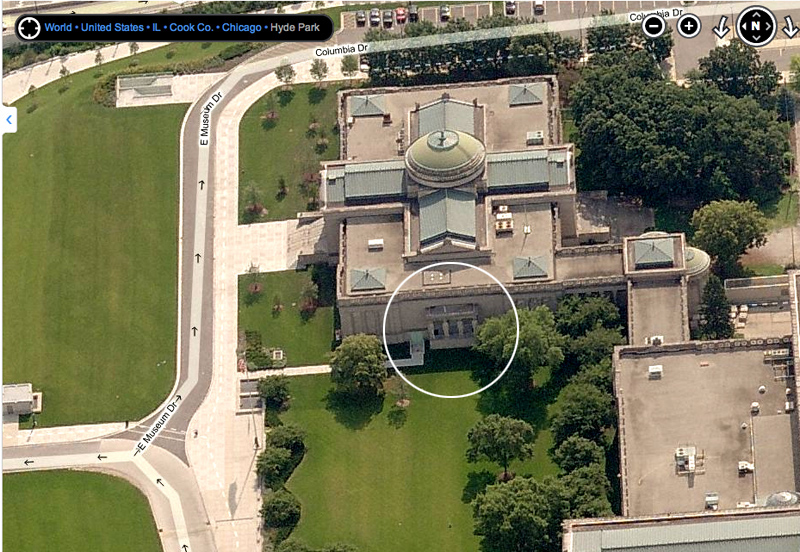
There are four sets of identical caryatids that you can see using Bing Bird's Eye View. I've circled their locations. (The museum says there are eight in all) 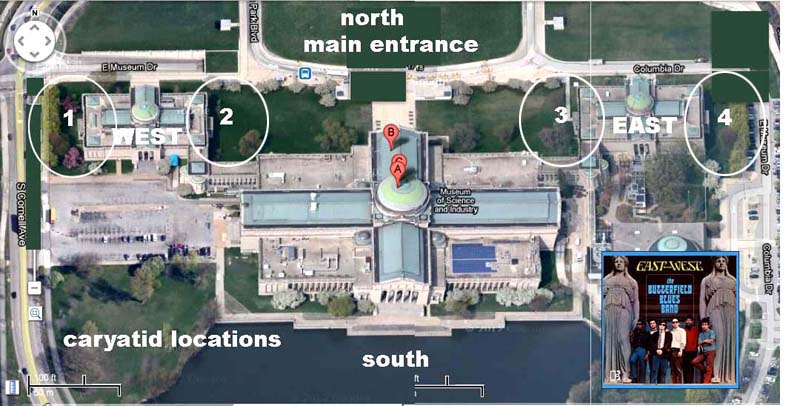
So let's go now to the back cover photo. It shows the band members running out of a tunnel. 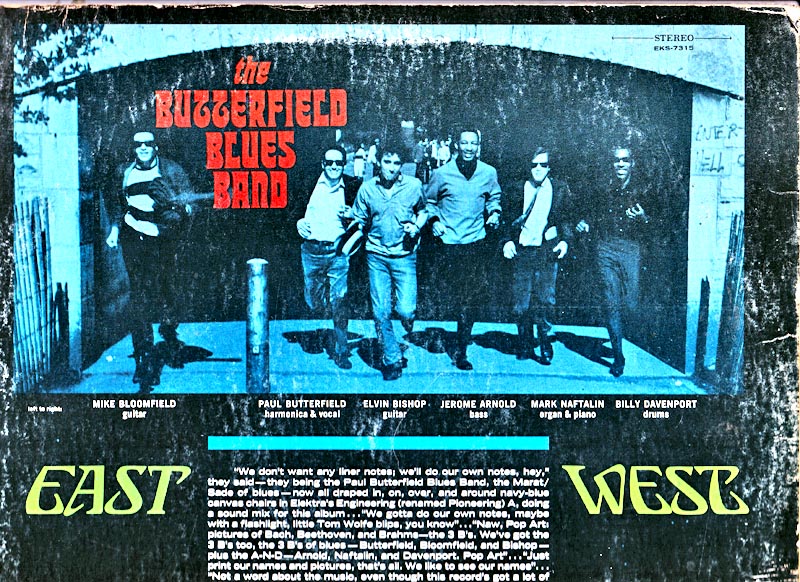
I figured that the back cover photo was probably taken nearby to the museum shot, because the members of the band were wearing the same clothes. So, first, I looked to see where there might be underpasses near the museum. I found seven underpasses that went under the Highway 41 (Lake Shore Drive) that separated the museum from Lake Michigan. 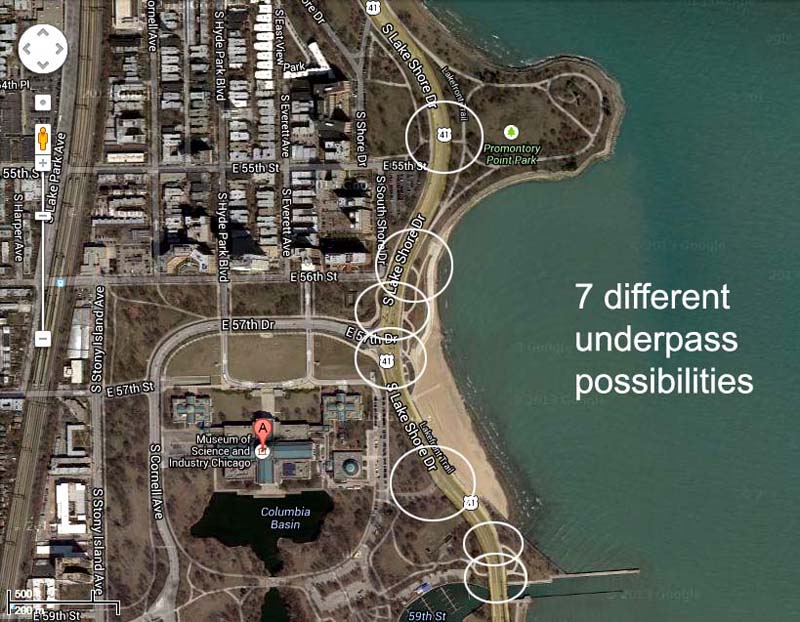
So I first searched on Flickr for "underpass Museum of Science and Industry Chicago" and found this shot. It had the look of the "Paul Butterfield" underpass, but it's the top was too straight. The real one was arched. 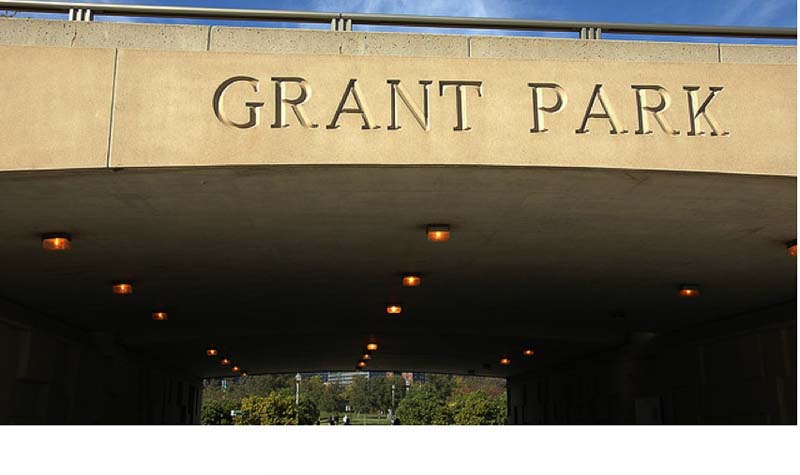
So then I figured I would use Google Street Views to check out all six underpasses and I would start at the top underpass, since it was near a large park on the lake. I figured that they made have been going to the park to take pictures. Bingo! The scene matched! It even had a three foot-tall pole sticking out of the foreground - the one that featured so prominently in the album cover (back) photo. 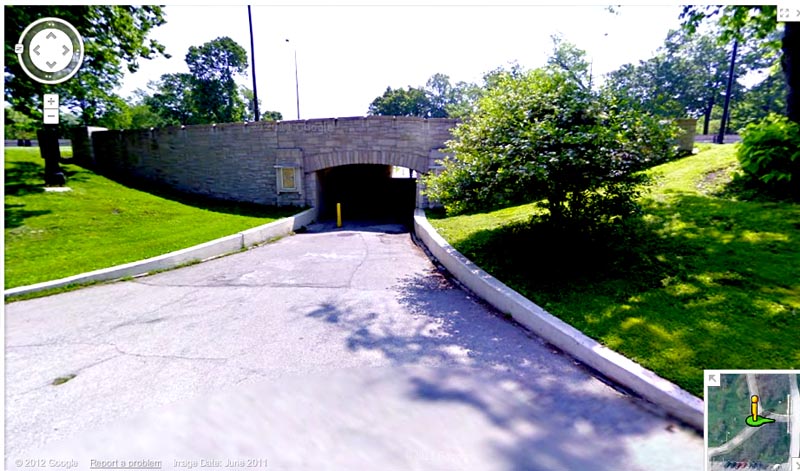
Then I spun the camera around just to see if there might have been any other reason they were there. But didn't find any. I have circled where they were depicted running, and the green direction symbol under the little person shows the direction they were running. 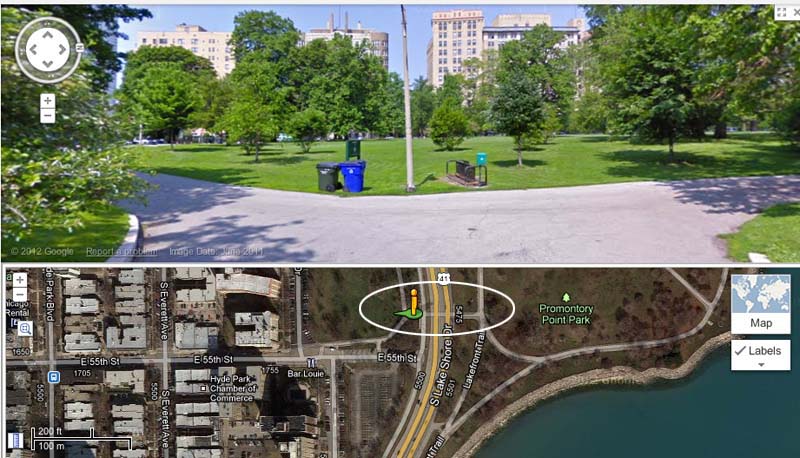
I even went into the underpass and looked out the other end. But at the other end, the yellow column sticking up from the ground was on the opposite side as it was in the photo, so I knew the photo wasn't taken at that end. 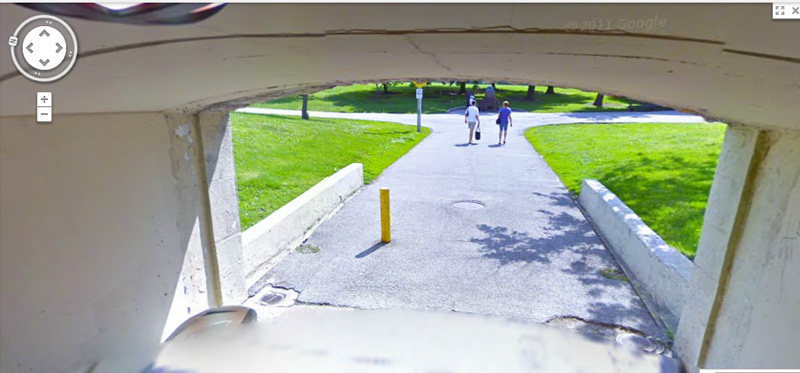
Here's another view of the underpass. 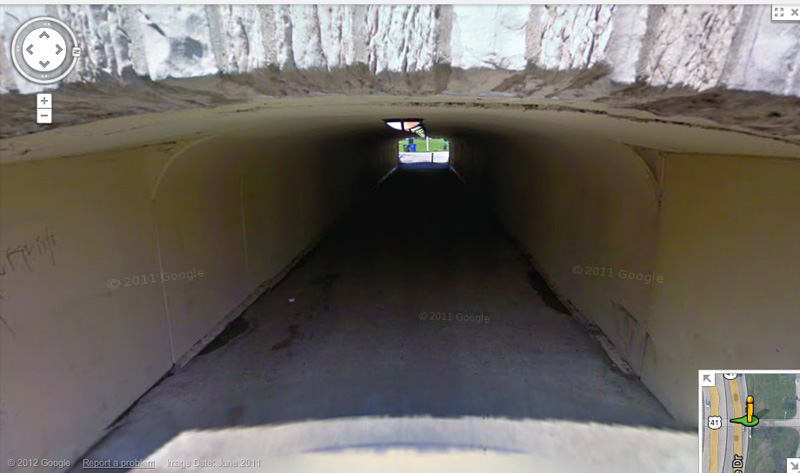
So here's the band coming out of the tunnel again. 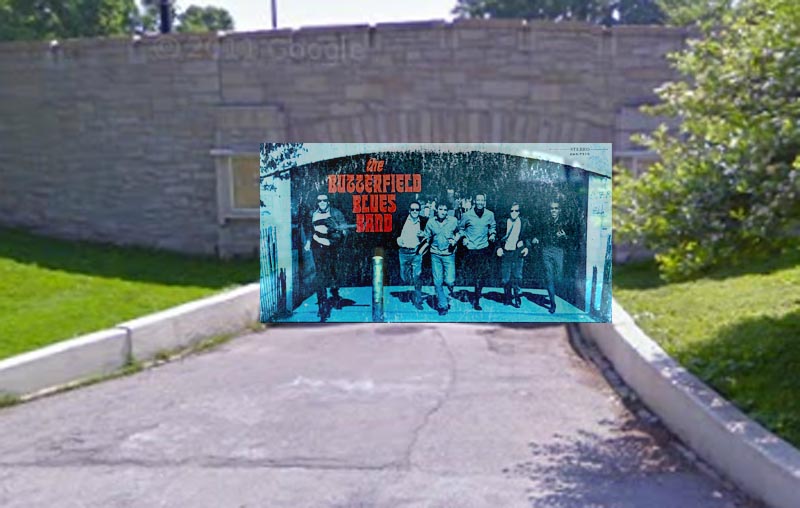
And here's a close-up of the security pole. 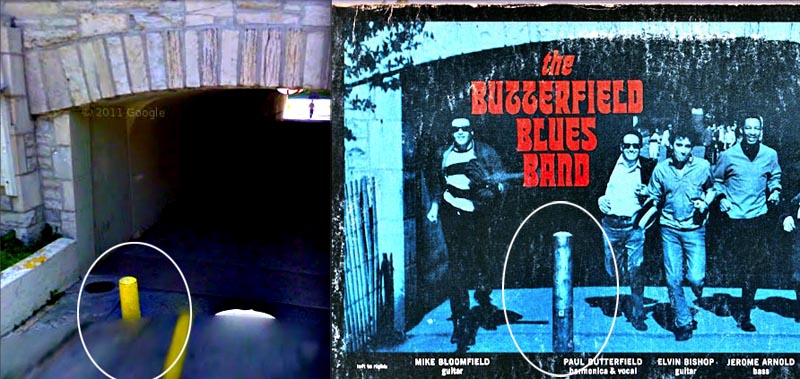
Off to the left, you can see how the concrete work on the left matches up. 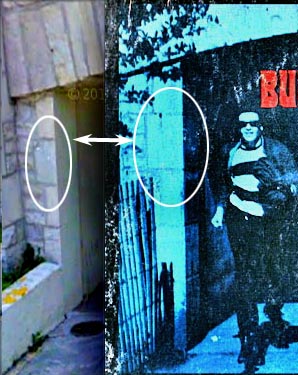
As it also does on the right. 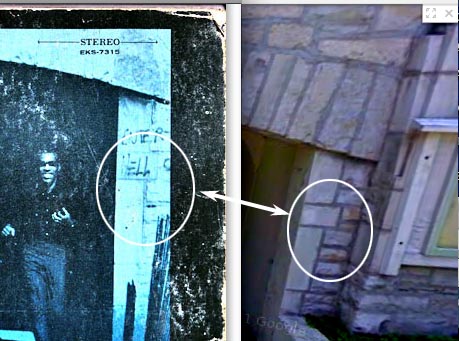
So here again is where the back cover photo took place. Probably just a quarter mile north from the museum. (Which shows some dedication on the band's part, most band's seem to take all their pictures within a block or two or each other.) (Interesting note: In the "Paul Butterfield" entry on Wikipedia Paul's brother Peter is quoted as saying that Paul would practice his harmonica "for hours" on end in Promentory Point Park (on the top right part of the picture below) and that they grew up close-by in the Hyde Park neighborhood near the museum.) 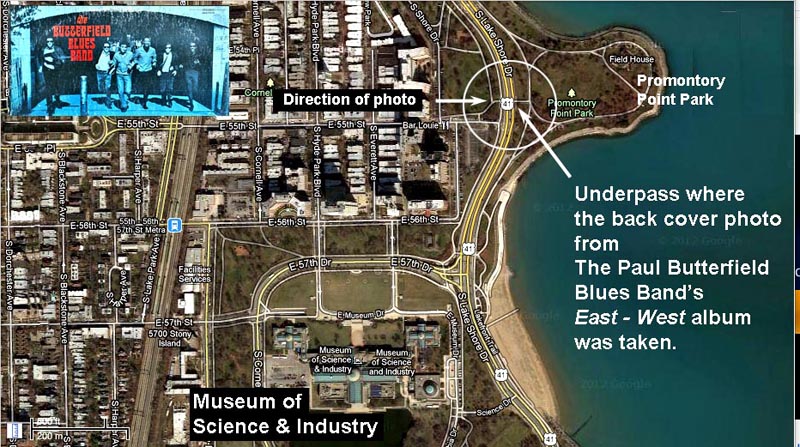
Later, in the middle of winter, when I was reviewing this entry, I noticed two water-drain pipes to the left and behind the band members in the photo. So I called the museum again and they said they were the ones next to the caryatids to the far west of the museum.... 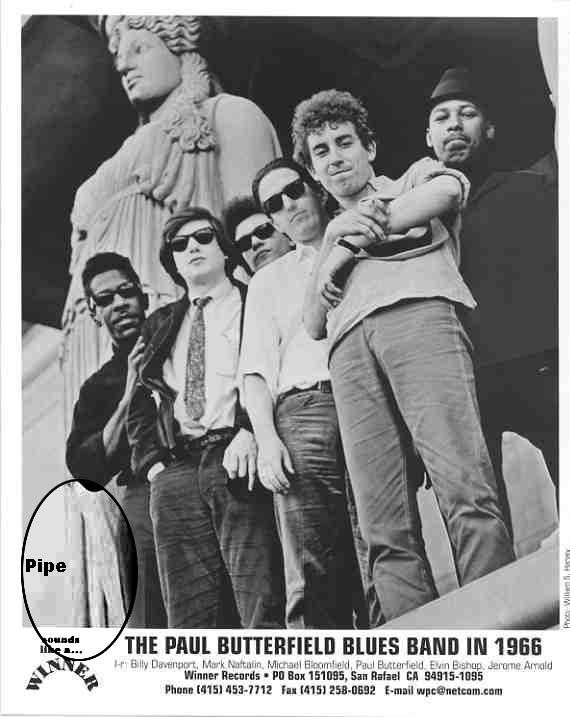
...that would be these (below) . So it was most likely this set of caryatids, next to the western parking lot, that were in the cover. (Which makes sense because this would have been out of site of "the man" (i.e. "security"). But since all the caryatid groups are the exact same, I'm fine with the photos as we have them. But if anyone can find a photo of caryatid with the drains next to them, I will post them in the addendum. Until then, thank you Chicago for bringing us the electric blues and thank you Larry for your suggestion, your pride in Chicago, and your photos. 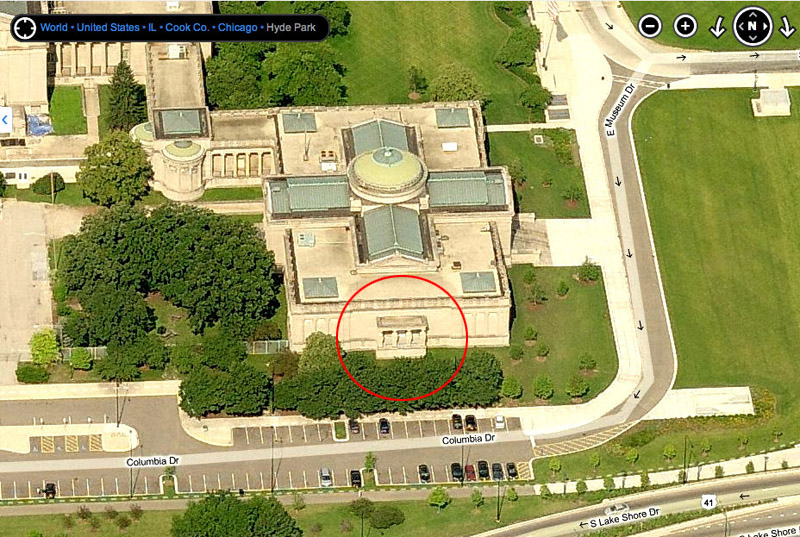
Here's the cover again. 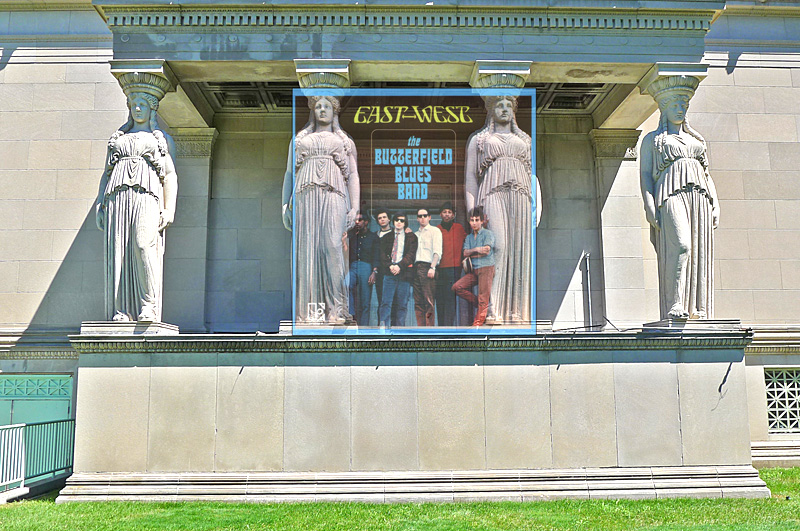
(background photo by Larry Hearn) So long, ladies! 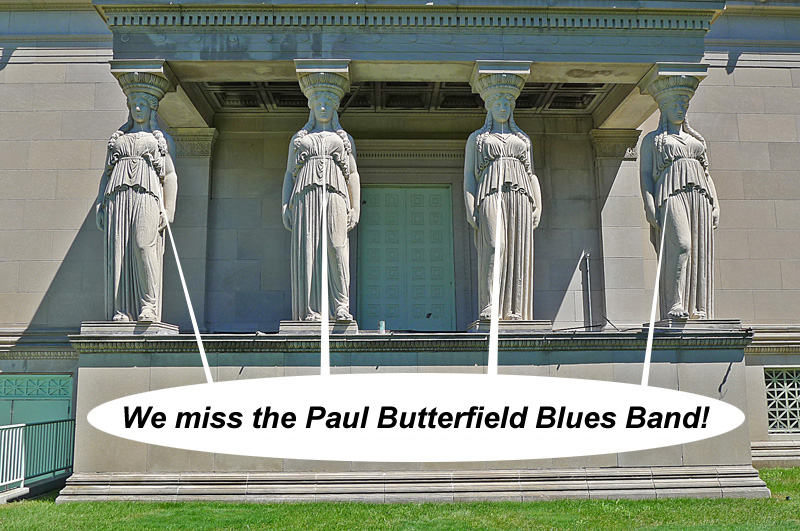
(photo by Larry Hearn) 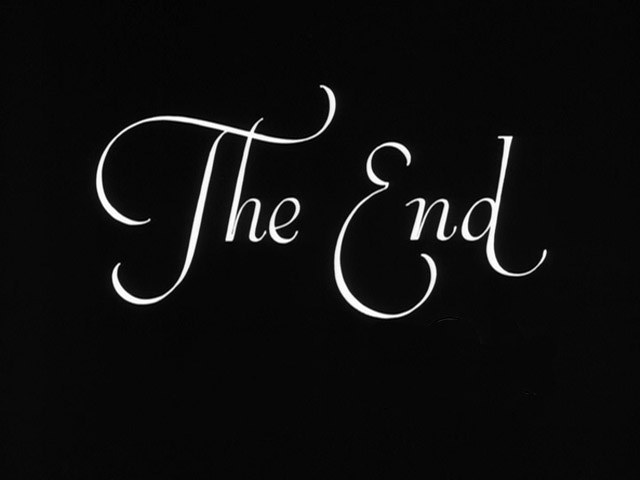
ADDENDUM #1 Here's the band's first album (1965, Elektra). I don't know the location. If anyone knows the location of this photo shoot, please email me. I've added some outtakes from the photo session following the album cover and close-up that might give some clues to its location. 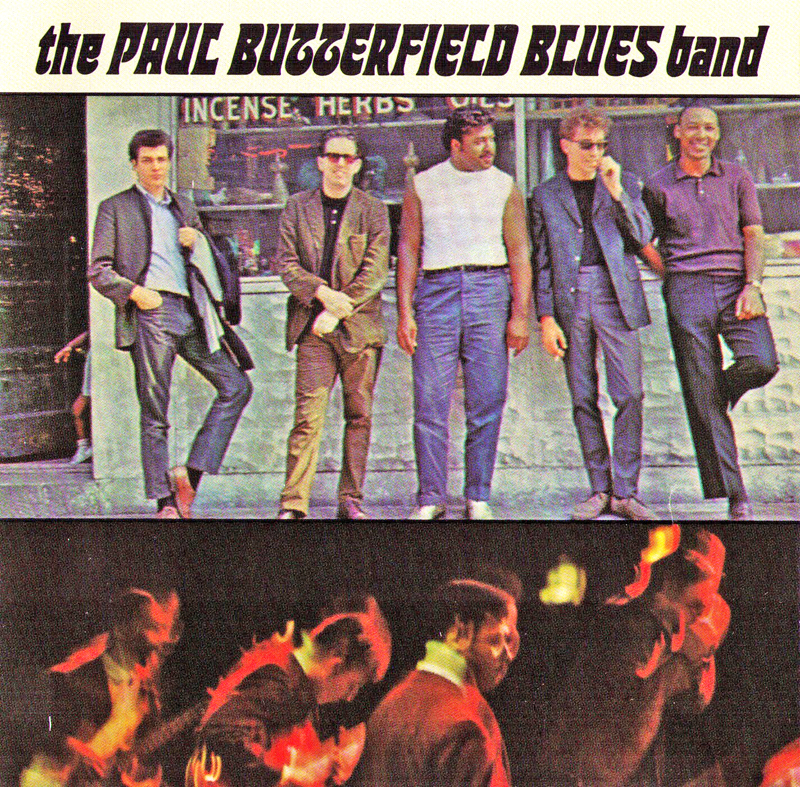
For a while I though this long-time store (Athenian Candle) on Halsted Street in the Greek Town section of Chicago, was the site, but for many reasons I have now discounted it. But I left it in so you can get a feel of what I'm looking for. (If you live in Chicago and wanted to "fake" the cover with your friends, it would work in a pinch.) 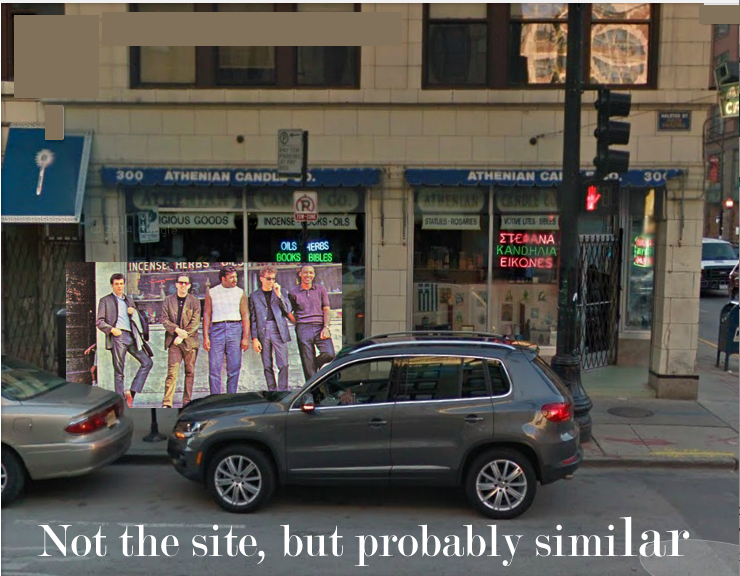
A close-up of the cover of the first album. 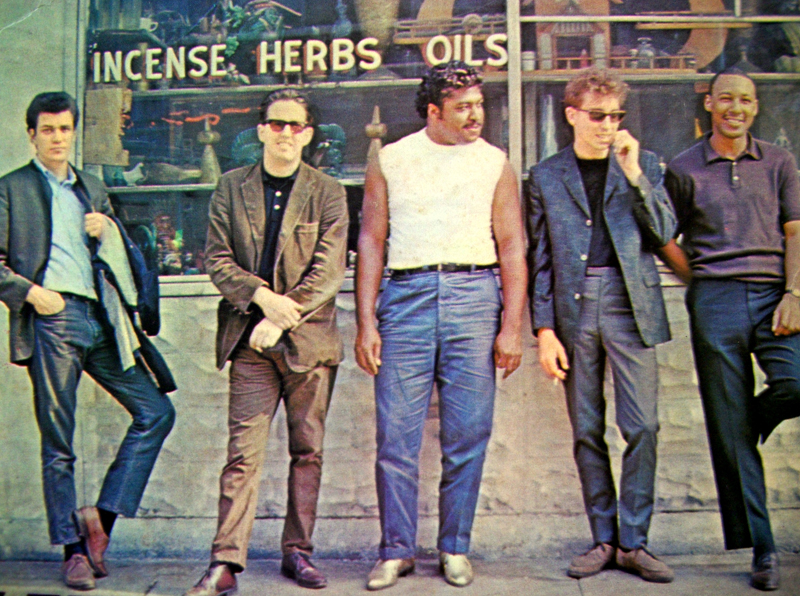
Outtake #1 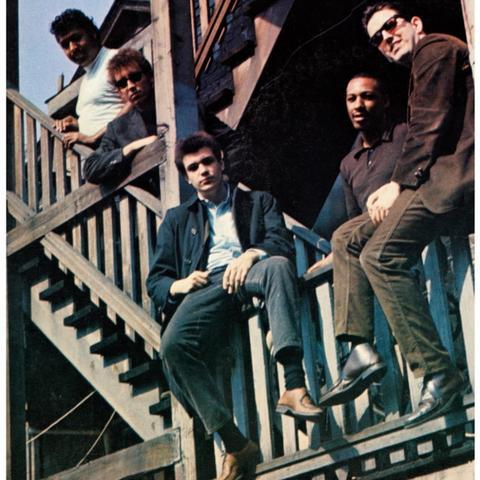
Outtake #2 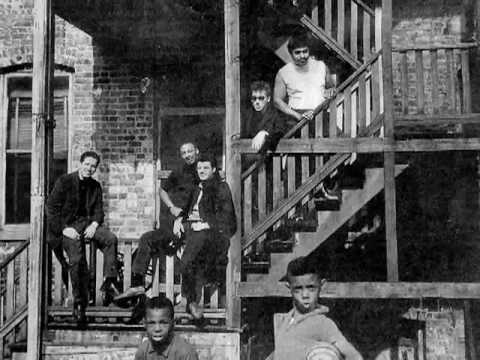
ADDENDUM #2 A nice shot of the band from the same time as East-West 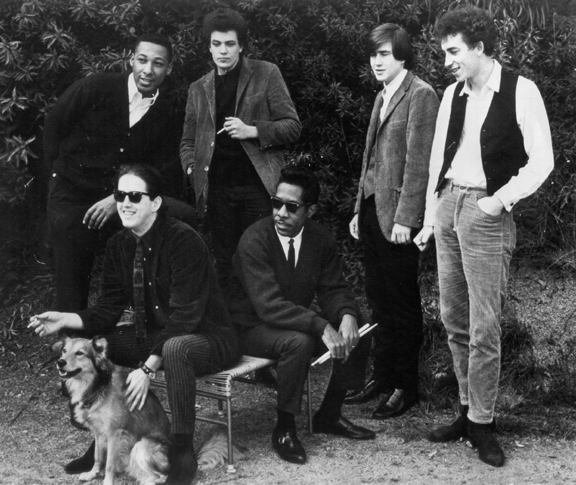
ADDENDUM #3 The band in Bearsville, near Woodstock. (album released in 1971). I'm looking for the location of this field, too. ADDENDUM #4 Paul Butterfield on the "To Tell The Truth" TV show. Mid-1960's. (The segment is nine-and-a-half minutes long). When the panelists try to guess who the real "Paul Butterfield" is, Paul and the two "imposters" make more money if the guesses are wrong. 
Click the triangle to play. |
||

